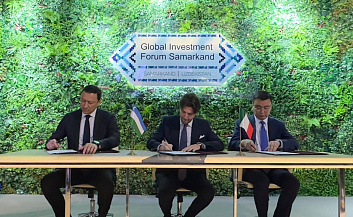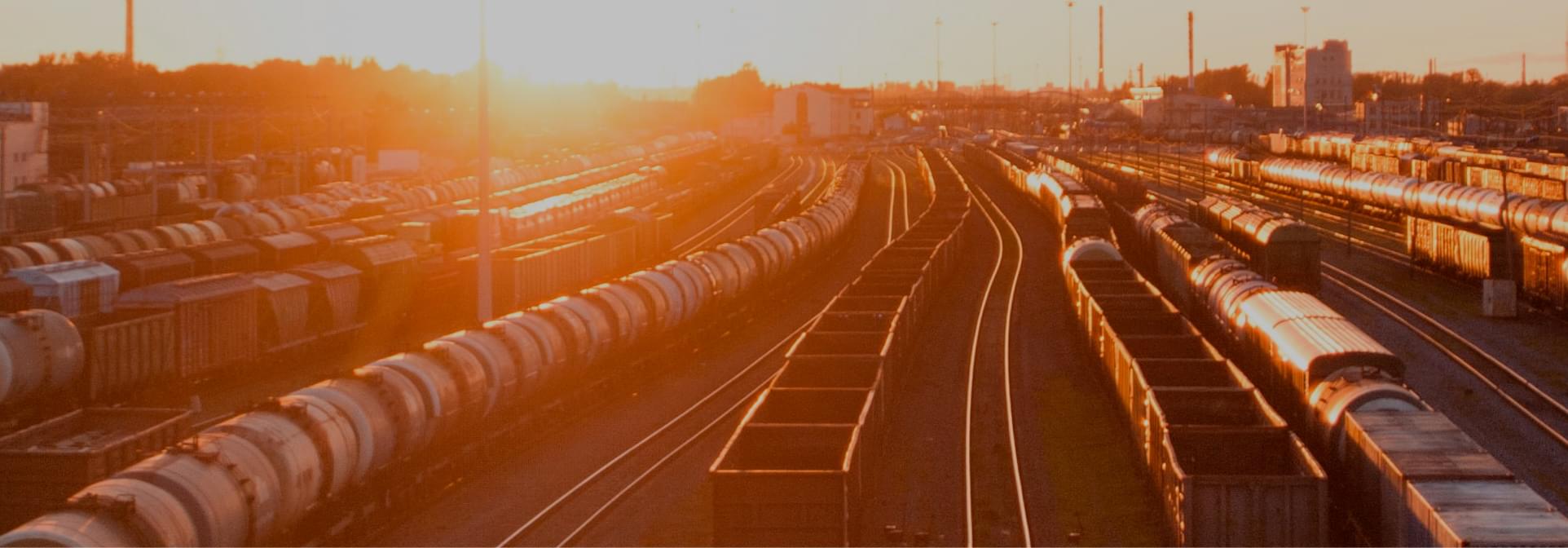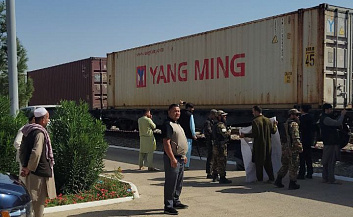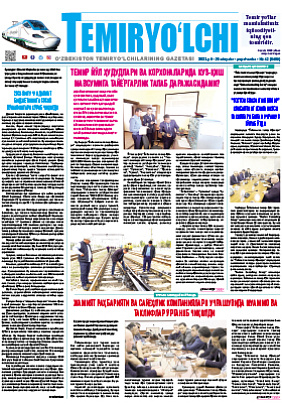
Formation of a single, branched and outwardly integrated transport space in Central Asia
Geography largely determines the ability of countries to develop. There are more than 40 States in the world that do not have direct access to the sea transport and thus they are cut off from the cheapest type of transport routes. Eight of the eleven countries in Central and West Asia are landlocked and can be said to be linked by common problems on this issue.
As you know, within the framework of the international conference “Central Asia in the system of international transport corridors: strategic prospects and unrealized opportunities” sectional meetings were held. Between the countries were touched upon very important aspects of the development of the transport sector, reasonable proposals and comments were made in the speeches, the fundamental issues to be solved in a constructive dialogue, new challenges and proposals were sounded.
Noting the work of the section on the topic: "Current state and prospects of development of transport and transit potential of the Central Asian countries" it can be emphasized that special attention was paid to the report on the topic: “Formation of a single, branched and outwardly integrated transport space in Central Asia”. The report was presented by the NGO research and informatization center. PhD, s.r.f. - Ibragimov U.N., introduced the participants of the section to it. He also provided a brief overview of the analysis on the topic.
The President of the Republic of Uzbekistan at the next SCO summit, which was held on June 10, 2018 in China, stated the following: We consider that the initiative is “One belt, one way” is actual implementation of interregional transport projects: We need new shortest routes to the largest world markets. Uzbekistan supports the construction of railway lines Mazar-i-Sharif - Herat China, Kyrgyzstan and Uzbekistan. “In addition, we suggest considering the possibility of establishing an international transport - logistic associations of the SCO ".
A well-built strategy for the formation and development of international transport corridors ensures economic development not only of the Central Asian States, but also of other countries involved in transportation, - noted PhD, s.r.f., Ibragimov U.N. - As you know, such as: inconsistency of the legal framework of different countries - participants of the transportation process; different technical standards; lack of a unified railway gauge all the way, as well as the high downtime of transit cargoes on the borders due to the long process of customs clearance.
- exhaustion of the capacity of the Suez Canal;
- the military operations of Saudi Arabia and a number of countries in the Persian Gulf for control of the Bab el Mandeb Strait, through which ships enter the Suez Canal;
- congestion of the main world ports of Eurasia;
- dynamic development of the economies of the People's Republic of China, India and Pakistan.
Currently there are routes from China to Europe with the participation of railway infrastructures of Kazakhstan and Russia. The main advantages of these lines are the low cost of transportation of goods, the absence of customs duties in the space of the Customs Union, as well as low time costs at border crossings. Negative aspects, especially for the Transsib, are the high delivery time for cargoes because of insufficient infrastructure capacity to handle the full flow of goods, as well as long tariff distances.
The transport corridor in Kazakhstan has a marine component, In addition, the goods are transported in transit to the existing border crossings Dostyk-Alashankou and Khorgos-Altynkol, and however, in the near future the capacity of these lines may not correspond to the dynamics of the volume of transport between China and Europe. In consequence, the need for alternative land routes, along which it is possible to deliver goods to Europe and back.
The mutual trade turnover of the two most economically advanced countries of Southeast Asia - India and Pakistan with the EU countries shows stable growth. Forecasts show that, in addition to maintaining positive growth in all types of communication and trade, the trade flow from the EU to Southeast Asia will reach a greater value by 2026, which will lead to demand for alternative modes of transport: air, road and railway.
Along with this, it should be noted that in 2017 India and Pakistan became full members of the SCO.In case of successful implementation of the project for the construction of the China-Kyrgyzstan-Uzbekistan railway line is formed another corridor which linking Central Asia with China. Kashgar station was taken for the beginning of the route, as in China economically and industrially the western part is developing near the city of Kashgar. The formed corridor is much shorter than the existing ones.
Under these conditions, the construction of a railway line from Mazar-e Sharif to Herat in Afghanistan will ensure the access of the Uzbek railways to Iran and its ports. As a result, it would be possible to connect the roads with Qatar, Oman, and also to provide access through Turkey to the EU through the trans-Afghan corridor.
At the same time, it will be very difficult to compete with the railway line Kazakhstan-Turkmenistan-Iran to the proposed railway line Mazar-i-Sharif-Herat without connecting the railways of China and Uzbekistan through Kyrgyzstan. In addition, the ports of Iran go to the Persian Gulf and for the delivery of cargo to the Suez Canal. It is necessary to go around the Arabian Peninsula and cross the Arabian Sea to get to the ports of the Indian Ocean.
The development of transport corridors along the territory of Central Asia leading to the formation of a unified transport system is the impetus for seeking additional outlets for international markets.
China and India, for a long time are interested in getting out on the shortest land roads to Europe. In addition, today these two great countries are not connected by rail transports, as well as the railways of India do not have access to the railways of Central Asia and other regions.
Consider the corridor China - Kyrgyzstan - Uzbekistan, one of the branches of the ancient "Great Silk Road". On interstate butt points China-Kazakhstan by 2020. Expected volume of more than 9 million tons of transit cargo to the Central Asian countries and to the EU countries. By 2035 is expected to increase in comparison with 2020 in more than 4 times. At the same time, before the construction of the railway line, you can use the existing international highway from the existing logistic center of Andijan to Kashgar, which from February 2018 started plying trucks. This route is followed by the cargoes of Uzbekistan to China and back.
The calculation of the cost of auto transportation - as a railway tariff, which is much cheaper than an automobile, The difference in the size of the transportation subsidy between road and railway transport is calculated. The result speaks about the profitability of transportation due to the reoriented volume of cargoes of 10%, 20% and 30% transported through the IPBP of China and Kazakhstan.
Next, consider the corridor Pakistan-Afghanistan-Uzbekistan one of the solutions to the problem of the lack of a railway connection between India and Pakistan with Central Asia and other states can be the construction of the Mazar-i-Sharif-Khulm-Puli-Khumri-Doshi-Surabay-Jlealabad-Torkham (Pakistan) railway line, with a branch from Surabaya to Kabul. At the same time, the simultaneous construction of a railway line towards Pakistan from the operating station Torkham, through Jalalabad with their docking in Surabaya (Afghanistan). The importance of the current railway station of Torkham (Pakistan) is to leave through it to a large port in the Arabian Sea and connect to the railway network of India.
The construction of a new railway line can also cause Russia's interest, for the promotion of the Eurasian economic space to the south and the increase in transit traffic. At the end of the XIX century, Russia considered the project of the Indo-Volga. The construction of this line is complicated by the presence of some problems: - uncertainty of the geopolitical situation in Afghanistan and high cost of construction of separate railway sections.
At the same time, before the construction of the railway line, you can use the existing international highway. The creation of logistics centers at Mazar-i-Sharif station (Afghanistan) and at Torkham station (Pakistan) for the organization of intermodal transportation (by rail and road transport) will help to attract interest in cargo transportation in this direction.
The length of this area is 673 km. And the length of the entire road from Peshawar to Termez (including the railway distance) is 748 km (the tariff distance "Mazar-i-Sharif-Hairaton" is 75 km).
International transport and logistics Association of SCO. In order to make the international transport corridors under consideration more competitive, it is advisable to establish a single multimodal transport operator to address a wide range of issues related to the creation of an international transport and logistics system, which should operate at a single tariff rate.
Meanwhile, the establishment of the SCO international transport and logistics association and the "Single Portal for Transport and Logistics Services" would not help to bring only positions closer together in the implementation of many economic, communication and energy projects of interested states, but also to increase the degree of Central Asia integration into the world transport network.
A little about the problem of the difference in width standards railway gauge. Railroad gauge: China, Iran, EU - 1435 mm; India, Pakistan - 1676 mm; the countries of Central Asia - 1520 mm. To date,
the following methods of solving boundary railway crossings are being applied by different countries of the region:
- reloading of cargo manually or containers mechanically from wagons with one gauge width to wagons with a different gauge width (China - Kazakhstan IPBP "Dostyk - Alashankou", "Altynkul - Khorgos"),
- change of railroad trolleys, in which wagons are lifted to replace trolleys of the same gauge to another (Iran - Turkmenistan IPBP "Serakhs").
It is proposed to organize the construction of new universal wagons at industrial car building enterprises in Central Asia (Kazakhstan, Uzbekistan) with sliding wheel pairs (RCP). As a result, at the butt stations of Kyrgyzstan and Afghanistan it would be possible to mount transferable track devices for the operation of large transshipment centers.
Based on the results of the research, it is possible to determine organizational and economic recommendations:
Firstly, to establish the "International Transport - Logistics Association SCO", which will include all countries participating in the transportation process of the corridor in question, as well as on the platform of the association to form the "Single interactive portal of transport and logistics services", accessible through a global network;
Secondly, to organize road transport of goods on the existing roads from Kashgar (China) to Andijan (Uzbekistan) and Torkham (Pakistan) to Mazar-i-Sharif (Afghanistan), with the charging of tariffs as for railway transportation. This will allow the cargo owners to reorient to transport goods in these areas;
Third, on the basis of scientific technical institutions, it is necessary to develop the designs of universal wagons with sliding wheel pairs, adapted to operation on railways of different track.
This report aroused great interest among the forum participants, and clearly substantiated arguments and facts gave good "important information" for thought.
Speaker:
(PhD),
Ibragimov
Umidulla
E-mail:
nib@railway.uz
http://transport-koridori.blogspot.com
Information Service
The use of materials from the official website of JSC “O’zbekiston temir yo’llari”, including republication, is possible only if the conditions are met.
FAILURE TO COMPLY WITH THESE CONDITIONS IS A VIOLATION OF THE LEGISLATION OF THE REPUBLIC OF UZBEKISTAN






